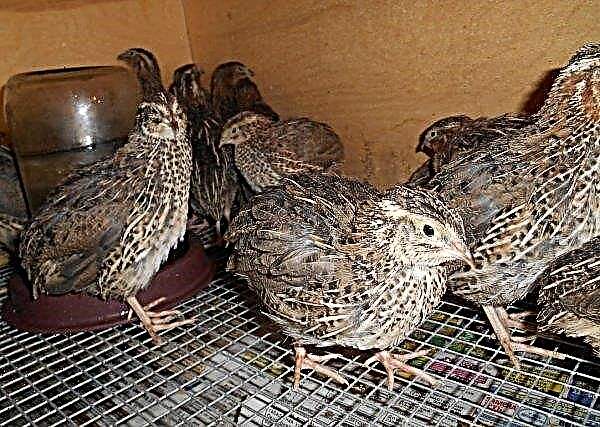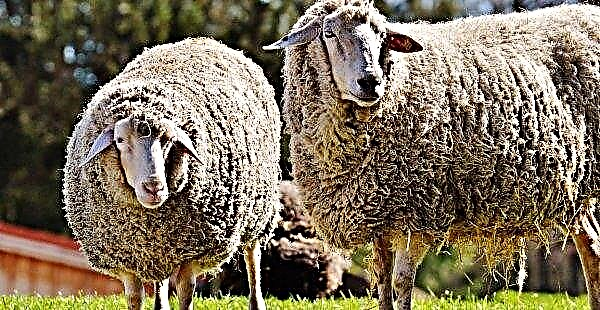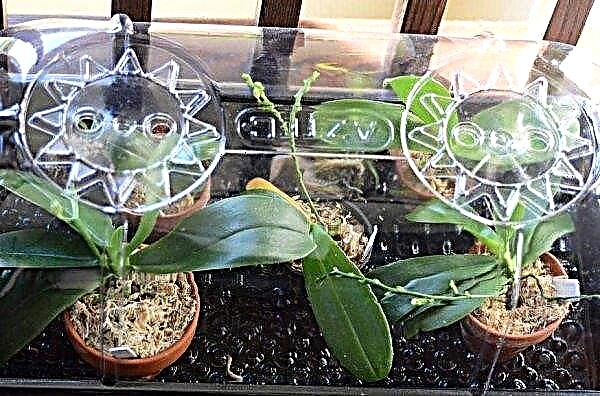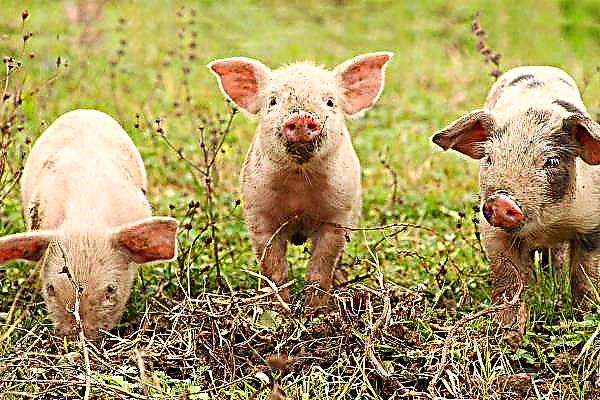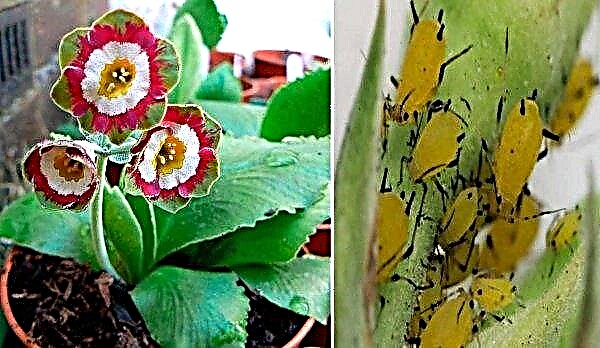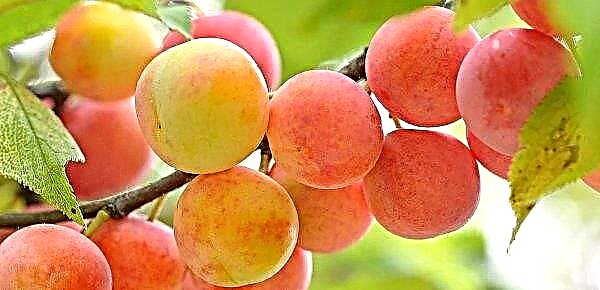Carrots are one of the most popular root crops grown both on an industrial scale and in private farmsteads. The article will discuss a young but already popular variety of carrots - Samson.
Description and characteristics of the variety
The Samson carrot variety was bred by Dutch breeders and quickly became popular.
Description of root crops
The root crop is large, cylindrical in shape, with a rounded end, bright orange in color. The mass of the fruit is 120–150 g, often it reaches 200 g. The length varies from 16 to 30 cm, but more often it is 20 cm. The tops of carrots are deep green in color, with a semi-spreading rosette. The pulp is juicy, sweet, without voids, with a carotene content (vitamin A provitamin) of 11.5%.
Ripening time
Samson is characterized by average ripening (mid-ripening), 110–120 days from the appearance of the first seedlings of plants to technical ripeness.
Productivity
Productivity is 5–8 kg of fruit per 1 m². Productivity - 530–760 centners per 1 ha.
Did you know? Carrots of orange color and sweet taste appeared in the XVII century, thanks to Dutch breeders. Initially, the root crop was white, purple and black, with a pronounced bitter aftertaste.
Advantages and disadvantages of the variety
- The advantages of Samson include:
- high germination of seed material;
- stable high yields in regions with different climatic conditions;
- unpretentiousness in leaving;
- one-dimensional root crops, a blunt tip is not subject to rot during storage, which makes the product highly productive;
- good preservation without loss of taste;
- resistance to diseases to which plants of the umbelliferous family are susceptible.
The disadvantages include the high cost of seeds compared to other varieties of carrots. Due to the popularity of the variety, there is a problem in purchasing planting stock.
Features of growing carrots Samson
Let us dwell on the main stages of growing a vegetable: conditions, planting dates, choosing a place and preparing a garden, preparing and planting a seed.

Growing conditions
Carrots are a vegetable crop characterized by cold resistance, therefore seeds can be sown in open ground when the air temperature is + 5 ° C. The soil should not be too moist or lumpy when planting, as this negatively affects the germination of seeds. It should be noted that the carrot ridge should be well lit throughout the day.
Landing time
Depending on the region and its climatic features, carrots should be sown from early spring - after the snow cover has melted and with sufficient moisture in the soil - until mid-April. They also practice landing in the winter - at the beginning of November, when the weather is stable and stable, but there are still no frosts.
Choosing a place and preparing the garden
Forming ridges for carrots is necessary at the place where in the previous season such vegetable crops grew as:
- cucumbers
- cabbage;
- potatoes.
It is undesirable to grow dill in close proximity to the root crop. Carrots require breathable, fertile, or sandy loamy soil, moderately fertilized, since both a deficiency and an excess of fertilizers adversely affect crop yields. Soil acidity - with a neutral or slightly acidic pH value.

Preparation and scheme of planting seeds
To speed up the germination process, carrot seeds are soaked in warm water for 24 hours. Change the water periodically to a warmer one.
The process of sowing seeds is as follows:
- 20 mm deep furrows are made on the ridge, at a distance of about 25 cm from each other;
- the distance between the seeds is maintained at about 2 cm, experts recommend taking into account that the seeds of the Dutch selection are characterized by high germination, therefore, it makes sense in a rarer planting;
- seeds placed in the ground are sprinkled with a small layer of earth and spilled with warm water from a watering can.
Important! For better germination and as a disease prevention before planting, heat treatment of planting material is carried out. Wrapped in tissue seeds are dipped for a couple of minutes in hot water, and then in cold.
Care Features
In order to grow a good crop of vegetables, it is necessary to regularly carry out agricultural activities, such as:
- watering;
- top dressing;
- thinning seedlings;
- protection against diseases and pests.
Let's consider each of them separately.
Watering
Samson carrots are demanding on moisture, so you need to add water on dry days every day, and on cooler days every other day. The formation of a dense earthen crust should not be allowed, so loosening is a mandatory manipulation. To preserve moisture, the soil surface is mulched with sawdust, straw, and mowed grass.

Fertilizer application
Organic fertilizers (manure solution, bird droppings) lead to a “branching” of the fetus, an increase in excess green mass, but gardeners still use them.
The first top dressing should be carried out in June with nitrogen fertilizers. The rest is based on potassium. The last time they “feed” the plants a month before the expected harvest.
Important! Samson is recommended to be fertilized exclusively with mineral fertilizers four times during the growing season.
Thinning
Thinning emerged seedlings should be to ensure a distance between plants of 5-7 cm, otherwise the future root crops are deformed and extended. Repeated thinning later in the growing season will allow the fruit to gain weight.

Protection against diseases and pests
Despite the fact that the Dutch variety is resistant to diseases and pests, it is necessary to observe preventive measures:
- To prevent fungal infections, nitrogen-based fertilizers must be dosed, since an increased concentration promotes the development of phomosis (tops are affected, the fungus passes to the underground part).
- With excessive humidity and high temperatures, there is a threat of black rot disease, which leads to deformation of root crops and reduces taste. In this case, the plants are treated with Falcon, Prozaro (at the dosage recommended in the instructions for the preparations).
Did you know? The heaviest carrots were grown in 1988 in Alaska - its weight was about 8.5 kg.
Harvesting and Storage
Approximately 15 days before harvesting the carrots, it is necessary to stop watering so that the fruit does not crack during storage. The collection is carried out in dry weather, before the onset of stable frost.

Before laying for storage, root crops are carefully sorted, checked for damage, the tops are cut off. Fruits are placed in boxes with moistened (not wet) sand so that the root crops do not touch each other. The optimal storage temperature is considered +1 ° C.
By choosing the Samson carrot variety and adhering to the simple rules of agricultural technology, you can grow an excellent crop, which, if properly stored, will provide you with a juicy vitamin vegetable for a long time.

